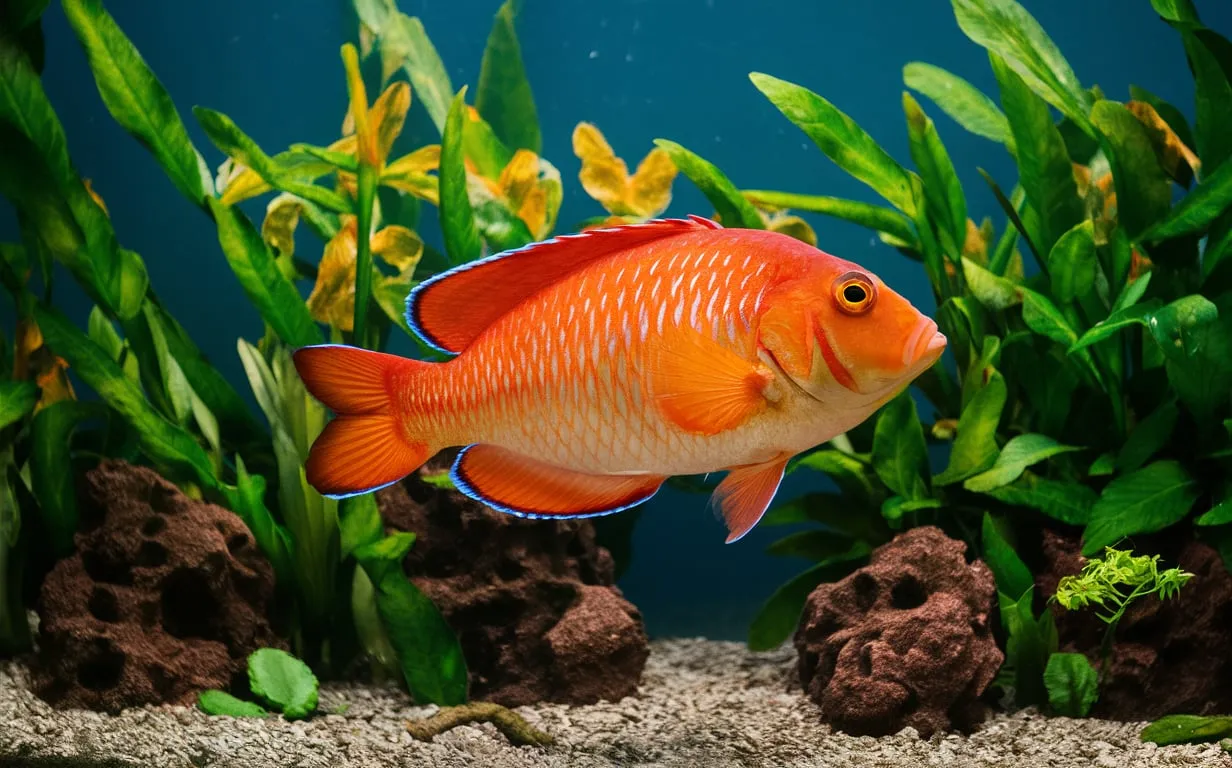When it comes to setting up and maintaining an aquarium, one of the most important considerations is the size of the fish. The size of the fish not only affects the overall appearance and aesthetics of the aquarium, but it also plays a crucial role in the overall health and well-being of the aquatic inhabitants. In this comprehensive guide, we will dive deep into the world of aquarium fish size, exploring the various factors that influence fish size, the implications of keeping fish of different sizes, and best practices for ensuring the optimal size for your aquarium.

Understanding Aquarium Fish Size
Aquarium fish come in a wide range of sizes, from the tiny tetras and guppies to the massive and majestic freshwater sharks and cichlids. The size of a fish is determined by a variety of factors, including its species, age, gender, and environmental conditions. Some fish, like the betta fish, can grow to impressive sizes in captivity, while others, like the dwarf corydoras, remain small throughout their lifespan.
It’s important to understand the maximum size a fish can reach, as this will inform the size of the aquarium you need to provide. Overstocking an aquarium with fish that grow too large can lead to a host of issues, including water quality problems, aggression, and even the premature death of the fish.
Factors Influencing Fish Size
Several key factors can influence the size of aquarium fish:
- Species: Different fish species have inherent differences in their maximum size. For example, the common goldfish can grow up to 12 inches (30 cm) in length, while the tiny neon tetra only reaches around 1.5 inches (4 cm).
- Age: As fish mature, they grow in size. It’s important to consider the adult size of a fish when choosing inhabitants for your aquarium, rather than their size at the time of purchase.
- Gender: In some species, there can be a significant size difference between males and females. For instance, male bettas are typically larger than their female counterparts.
- Water Quality and Nutrition: The water quality and the diet of the fish can also impact their growth. Optimal water parameters and a balanced, nutrient-rich diet can help fish reach their full potential size.
- Tank Size: The size of the aquarium itself can also influence the growth of fish. Smaller tanks may limit the maximum size a fish can achieve, while larger tanks provide more space for them to grow.
Importance Of Proper Fish Size
Maintaining the correct fish size in your aquarium is crucial for several reasons:
- Water Quality: Overstocking an aquarium with fish that grow too large can lead to a build-up of waste, which can negatively impact water quality and the overall health of the aquatic inhabitants.
- Aggression and Territoriality: Larger fish may become more aggressive and territorial, especially towards smaller tank mates. This can lead to stress, injuries, and even the death of the smaller fish.
- Aesthetics: The visual appeal of an aquarium is greatly influenced by the size of the fish. Maintaining a harmonious balance of fish sizes can create a more aesthetically pleasing display.
- Compatibility: Certain fish species are more compatible with others based on their size. Introducing a large fish into a tank with smaller tank mates can result in the larger fish consuming or bullying the smaller fish.
Choosing The Right Fish Size For Your Aquarium
When selecting fish for your aquarium, it’s crucial to consider the maximum size the fish can reach and ensure that the tank size can accommodate their growth. As a general rule, the tank should be at least 10 gallons (38 liters) for small fish (less than 3 inches or 7.6 cm) and increase in size accordingly for larger fish.
It’s also important to consider the fish’s temperament and compatibility with other tank inhabitants. Aggressive or territorial fish may require a larger tank or specific tank mates to coexist peacefully.
Common Aquarium Fish Sizes
Here are some examples of common aquarium fish and their typical size ranges:
- Betta fish (Siamese fighting fish): 2-3 inches (5-7.6 cm)
- Guppies: 1-2.5 inches (2.5-6.4 cm)
- Neon tetras: 1-1.5 inches (2.5-3.8 cm)
- Goldfish: 4-12 inches (10-30 cm)
- Angelfish: 6-8 inches (15-20 cm)
- Oscar cichlid: 12-14 inches (30-35 cm)
- Freshwater shark (red-tailed black shark): 6-8 inches (15-20 cm)
It’s important to note that these are just general size ranges, and individual fish may vary in their maximum size depending on the factors mentioned earlier.
Maximizing Aquarium Space
To ensure the optimal use of your aquarium space, consider the following tips:
- Choose the Right Tank Size: Select an aquarium that is appropriately sized for the maximum size of the fish you plan to keep.
- Mix Fish Sizes: Incorporate a variety of fish sizes in your aquarium, from small to large, to create a visually appealing and balanced display.
- Provide Adequate Hiding Spaces: Incorporate decorations, plants, and other structures that offer hiding spots for smaller fish, allowing them to escape from larger, more aggressive tank mates.
- Monitor Fish Growth: Regularly observe and measure your fish to ensure they are not outgrowing the aquarium. Be prepared to rehome or upgrade the tank if necessary.
Conclusion
With information of Betta Fish 247 by following these guidelines and understanding the importance of proper fish size, you can create a thriving and harmonious aquarium environment for your aquatic inhabitants.

Related Posts
The Record-Breaking Prices of the Most Expensive Betta Fish
Exploring The Diversity Of Rare Beautiful Betta Fish
Understanding the Largest Biggest Betta Fish Species